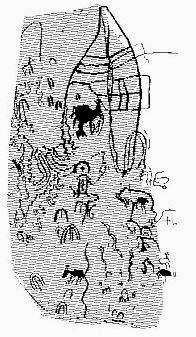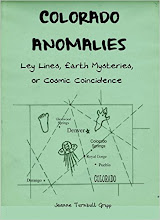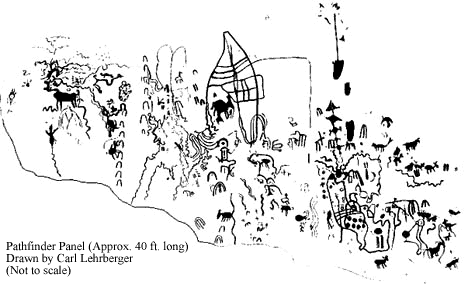Monday, April 27, 2015
Cat Tales ~ Odd Couple
These two Kittys are the most unusual friends.
A Lynx befriended a Calico Kitty that snuck into the Lynx's enclosure at a zoo in Russia.
Proof that everyone CAN get along!
Purz and Catnip Dreams.......Gomez
Sunday, April 26, 2015
Monday, April 20, 2015
In Memorium .......
Goliath
2004-2015
An itty bitty kitty you were,
A cute, cuddly bundle of fur.
Then you grew and grew,
And before we knew..
You were big and mean and lacking in charm
But you still loved a snuggle and laying on Daddy's arm!
May your fields be filled with Catnip
Your food bowls overflow with food.
May you always have a warm lap
Goliath, We miss you.
An itty bitty kitty you were,
A cute, cuddly bundle of fur.
Then you grew and grew,
And before we knew..
You were big and mean and lacking in charm
But you still loved a snuggle and laying on Daddy's arm!
May your fields be filled with Catnip
Your food bowls overflow with food.
May you always have a warm lap
Goliath, We miss you.
Purz and Catnip Dreams ....... Gomez
Sunday, April 19, 2015
Thursday, April 16, 2015
OOPArts
Here in the state of Colorado, there are more 'out of place
glyphs' than just in the SE corner of the state.
Outside of Denver, near the foothills, is a series of Ogham
markings on a rock outcropping. It was translated to say, ROUTE GUIDE; TO THE
WEST IS THE FRONTIER TOWN WITH STANDING STONES AS BOUNDARY MARKERS. This
was perhaps a way of directing travelers to a settlement or shelter of some
sorts. This rock outcropping is known as the CENTRAL COLORADO INSCRIPTION.
After its initial study by McGlone and two colleagues, the inscription was
buried under several feet of dirt by the property owners to prevent vandalism
and to keep the curious away.
Other random OOPArt - A rock carved like a scarab beetle which
also has Egyptian style hieroglyphics on the back of it was found near Durango.
A Blue granite rock was found near Granby. On one side was the
carving of a man with a head similar to Toltec carvings and the other sides
were carvings of dinosaurs and what appears to be an elephant or maybe it was just
a mammoth.
A boulder was documented near Cripple
Creek which had, what is theorized, a Greek inscription which was interpreted to
read HERE LIES THE SERVANT OF GOD, PALLADEIS. After further analysis, the
writing was found to have remarkable similarities to Jewish inscriptions found
in catacombs from the 6th-8th centuries AD. I am still researching this.
In New Mexico, near Los Lunas which is just south of
Albuquerque, is a huge boulder at the base of Hidden Mountain. Inscribed on
this boulder are 9 rows of 216 proto-Hebrew characters which, when translated
was a complete rendering of the 10 commandments. The alphabet used on the rock
came into use around the 10th century BC and was no longer used after 70 AD.
This boulder was first reported in 1871 and some of the lettering was not known
to the science community before 1884. So a hoax is highly unlikely. Nearby on
Hidden Mountain are also found defensible stone walls and another boulder with
what appears to be constellations and a solar eclipse which occurred in 107 BC.
I throw this in simply because to show that there are many, many odd and out-of-place artifacts throughout the country.
In Oklahoma, not far from Crack Cave, is a cave with
Middle-Eastern style petroglyphs. This cave is located on the Cimarron River
and named Anubis Cave. There is also evidence of Celtic explorers at this cave
system.
I have read that the Arabic alphabet and Ogham script extend into
the Rockies. Near Penrose there are stone circles and low stone walls similar
to those found in Picture Canyon. Could the travelers who journeyed through the
La Junta area have made the voyage further up the Arkansas River?
I will continue to dig and delve - one never knows what will
turn up.
Labels:
colorado,
mysterious,
mystery,
new mexico,
OOPArt,
petroglyph
Wednesday, April 15, 2015
Old World Graffiti ~ part 2
The man who did so much for these enigmatic sites was
William McGlone who lived in the La Junta area. He was a retired engineer
who served in the Navy. McGlone was a very scientific man who always wanted his
discoveries and theories verified by outside sources. He enlisted the aid
of many fellow engineers and scientists in deciphering the Ogham. To
McGlone, some of these rock carvings appeared to be much more than mere doodles
in stone, or the graffiti of Native Americans. He saw writing, with letters and
repeated symbols. Over the years, McGlone had attempted to identify these
letters and, shortly before his death in 1999, he had made a reasonable
argument that some of the petroglyphs were from an Arabic alphabet which would
have been used by Turkish sailors around 500 BC.
Crack Cave is located just north of the Colorado/Oklahoma state
line. The area where it is found is called Picture Canyon. The abundance of
petroglyphs here gave rise to the name Picture Canyon. Inside one of the
many crevasses that might be called a cave is an
archaeo-astronomical site that is only observable on the Spring & Autumn
Equinoxes. 3 sets of Ogham inscriptions are found inside - the first which is
located at the back of the cave, translates to the Celtic Sun God. On the South
wall the inscription reads, People of the Sun.
On the north wall is the third inscription - The Sun Strikes Here
on the Day of Bel (Bel is short for Belenus, the Celtic Sun God's name). This
last glyph is the one illuminated at sunrise on the Equinoxes. Above this last
glyph are count marks which tell how many days to the Equinox. The morning of
the Equinox, all the marks are illuminated. Today, the cave opening is
protected with a metal grate to prevent vandalism but the gate is opened on the
equinoxes by the park rangers to allow the public to view the alignment.
Sun Temple is located to the NW of Crack Cave (about halfway to La
Junta from Springfield). It consists of a small cave with the majority of
its glyphs on the roof of the cave. Here is the inscription of a
rare triple planetary alignment of Venus, Jupiter and Saturn
that occurred within the constellation of Gemini. The words
NOBLE TWINS has been translated from Ogham script. This alignment occurred
on a cross-quarter day - August 471 AD. A cross-quarter day is one which
occurs halfway between an equinox and solstice. Another archaeo-astronomical alignment
is here. One which only occurs at the Spring & Autumn cross quarter days.
Near it are the words Season for Reaping. Because the Sun Temple wasn't
discovered until 1982, the patina on the petroglyphs had been preserved. In
1987, a man who is now a Prof. of Geology at Arizona State University sampled
the patina or rock varnish that was embedded in the grooves of various petroglyphs.
His results showed that some dated back to 2700BC
Rock varnish accumulates on the outside of
rocks. Rock varnish is made up of a coating of approximately 70% clay
particles combined with mineral deposits of iron and manganese oxides - - all
probably wind-blown material that settled on the surface of rock. Other
minerals mixed into the varnish composition include hydroxides plus silica and
calcium carbonate. These ingredients are cemented to the rock surface by living
bacteria. The bacteria reside within and beneath the microscopic layers of
varnish, and are usually absent from the exposed surfaces. Exactly how rock
varnish is formed is not completely known, but one theory is that varnish
formation is a means by which these microbes protect themselves in their
exposed, extreme environments. Manganese oxides in rock varnish block the
transmission of ultraviolet radiation. Rock varnish forms very slowly and
becomes thicker and darker as it ages. Many older deposits become almost black.
By closely examining and measuring the varnish coat, geologists are able to
measure how long the rock's surface has been undisturbed. Radio carbon dating
can be used to date the petroglyphs to give a ballpark age. The science of
dating petroglyphs by using the rock varnish is still in the formative stages.
The Pathfinder site is located high above the Purgatoire River
valley South of La Junta, Colorado. It was originally discovered in
1996. McGlone and a colleague recognized that Pathfinder had the potential for
being a calendar site because it receives direct sunlight at the moment of
first light. On Pathfinder's rock face, a distinct shadow is cast from an
adjacent rock onto a prominent and unique target-like petroglyph indicating the
potential for marking time.
Pathfinder is a 40 X 12 foot slab of sandstone rock with a flat,
East facing surface covered with petroglyphs. A large boulder to the East leans
onto the southern half of the Pathfinder, creating a cave. The extended
northern part of the Pathfinder panel is exposed to the direct sunlight at
sunrise with a distinct shadow cast by the adjoining boulder.
The Pathfinder site has a vast array of images. The most
noticeable is the howling dog petroglyph which has an interesting stream of
symbolic figures emanating from its mouth.
To the South of Dog, more petroglyphs are distinguishable. Most notable is a
large wing-like or sail-like image with horizontal lines. This is the equinox
Target for the shadow created by the adjacent boulder to the East. The
Target and the Dog glyphs are the largest and most prominent petroglyphs on
Pathfinder. Below the Target are a series of petroglyphs including a human
figure, abstract and representational animal glyphs.
 |
| Equinox Shadow representation |
At sunrise on the day of the equinox, the Dog glyph is illuminated by the first
light. The shadow created by the adjacent boulder emerges at dawn and begins to
engulf the Target. As the sun rises, the shadow edge fits the northern outline
of the Target. Because of the cave-like conditions for much of the rock face,
it wasn’t possible to observe or photograph Pathfinder in its entirety. Only by
drawing details of the photos taken was the panel able to be re-created. At
least two different styles of petroglyphs can be seen: earlier abstract
characters and figures and later representational petroglyphs. There are also
unique sequences of parallel lines, but they were too worn to be distinguishable.
A Native American archaeo-astronomical petroglyph was also found at Pathfinder. It is believed to be of Changing Woman, a person found in many
Native Tribal Stories. Changing Woman is crossed with a dagger of light on the
Equinoxes.
Many scientists feel that there should be
physical evidence or artifacts to support the claim that the grooves are Ogham
writing. There probably were artifacts at one time but repeated flash flooding
through the centuries has washed away or covered up any artifacts that may have
been there. The fact that most of the petroglyph panels are 10ft or
more above the bottom level of the canyons and arroyos supports this
theory of flash flooding stripping away the soils found in the bottom of the
canyons.
Labels:
Arkansas river,
celtic,
colorado,
Ogham,
petroglyph,
Pikes Peak Historical Society
Tuesday, April 14, 2015
Old World Graffiti Along the Arkansas River
***This is a presentation which I recently gave. I have not yet visited these sites.***
My interest in petroglyphs began when I was a child growing up
in the San Luis Valley where petroglyphs seemed to be everywhere. As I aged and
began to delve into art, my interest in petroglyphs continued. I found it
interesting to see how ancient peoples viewed their world and described it in
the artwork they left behind.
The majority of the petroglyphs found in the southeast corner of Colorado are in and around the Comanche National Grasslands and they are quite
unique. They're believed to be Pre-Columbian and of European
Origin. SE Colorado is an area of short-grass prairie with canyons and
hoo doos carved out by the waterways which bring the essence of life to the
area. The Arkansas River flows through here on its way to the Mississippi. But
the Arkansas isn't alone - the Purgatoire River & Apishapa River along with
numerous smaller waterways feed the Arkansas. This area was frequented by various people through the eons. Some
might have been nomads, simply following the herds. Others could have been
explorers, looking for ore to mine or new land to populate.
The mesa tops provided a place to scan the plains for buffalo or
antelope while the canyons offered shelter from the unrelenting sun or sudden
storms. The river bottoms provided fertile land for agriculture. It is amongst
these caves and other niches that the people who visited this area left their
mark. Graffiti of sorts. At least that is what it would be called today. But
this Graffiti wasn't made with cans of paint but rather by scraping and carving
the rock, leaving behind Rock Art. These people were determined to record
events, thoughts, ideas for posterity.
 |
| pecked petroglyph |
 |
| carved petroglyph |
Rock art can be petroglyphs or pictographs. Petroglyphs are
symbols which have been carved into stone - they can be pecked resulting in
round indentations as well as scraped or carved into the rock resulting in a more defined
glyph. Carved glyphs last longer. When creating a glyph, the patina or rock
varnish, is scraped off leaving the bare rock face exposed. Depending on where
the glyph is located - area of the country, location on the rock - a glyph may
remain readable for centuries. Petroglyphs should not be confused with
pictographs - pictographs are painted on.
 |
| SE Colorado map C - Crack cave S - Sun Temple P - Pathfinder |
There is an abundance of rock art here but there are three
specific sites of interest. Crack Cave, Sun Temple and the Pathfinder Site.
These sites have the typical rock art attributed to the Native Peoples of
Colorado but they also have some unusual markings which have been determined to
be an ancient form of writing found in the British Isles and Iberia - all
locations where the ancient Celts lived. This writing is called Ogham.
 |
| Ogham writing on rock in Ireland |
Ogham is the oldest form of writing in Ireland and Scotland. It
can still be seen inscribed on hundreds of large and small stones, on the walls
of some caves, but also on bone, ivory, bronze and silver objects. The Ogham
script was especially well adapted for use on sticks. And sticks were always in
ready supply and easier to carve on than rocks. Ogham writing has been discovered at Stonehenge dating to 2200BCE.
The true origin of Ogham is unknown. A 7th century Irish
text states that the origins of Ogham should be sought in the Near
East. It may have originated in Libya. It is believed that
the Phoenicians came from the region which encompasses Libya and they settled
the areas of Spain where the early Celts lived. The Phoenician later expanded
their journeys to include Ireland and later Scotland and England. As these
skilled seamen settled in new areas, they brought their customs, knowledge and
beliefs with them. The Ogham found in Europe is usually written vertically
while the Ogham carvings here are written horizontally. This may be because it
was easier to find long uninterrupted horizontal surfaces on the rock
walls. Irish monks, centuries ago, translated Ogham into Gaelic which has enabled Ogham to be translated into English.
 |
| Stonehenge - the most well known Archaeo-astronomical site |
All three of the sites I’m going to tell you about are
archaeo-astronomical sites. Archaeo-astronomy is the study of how sky watchers
of the past understood the phenomena in the sky, how they used these
phenomena and what role the sky played in their cultures. Often the people
relied on sunlight and shadow plays striking and passing across targets and
designs which were aligned with Equinox, Solstice and Cross Quarter sunrises
and sunsets. The celestial cycles of the moon, Venus and Mars captivated their
attention, as well. Knowing seasonal durations and transitions was vital to their
success in hunting migratory prey and planting and harvesting crops.
Archaeoastronomy draws on several scientific disciplines, primarily astronomy,
archaeology, anthropology, psychology and epigraphy (the decoding of ancient
inscriptions).
***Part 2 tomorrow!***
Sunday, April 12, 2015
Sunday, April 5, 2015
Subscribe to:
Posts (Atom)


























.jpg)

























